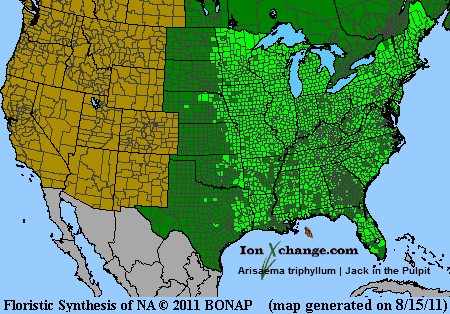 Loading... Please wait...
Loading... Please wait...- Home
- SEEDS
- SEED MIXES
- BUY PLANTS
- Info Request
-
Educational Videos
- Greenhouse Transplanting Demonstration
- Native Seed Cleaning demonstration at Ion Exchange Native Seed and Plant Nursery
- Attracting Butterflies
- Bidens - Bidens cernua Harvest Video
- Big Blue Stem Harvest
- Butterfly Milkweed Video
- Button Blazingstar - Liatris aspera Video
- Buttonbush - Cephalanthus occidentalis Video
- Canada Anemone - Anemone canadensis Harvest Video
- Cardinal Flower - Lobelia cardinalis Video
- Control Burn - Wildflower Field
- Cream Gentian - Gentiana flavida
- Culver's Root - Veronicastrum virginicum Video
- Cup Plant - Silphium perfoliatum Video
- Dormant Seeding | Planting
- Earthyman's Favorite Wildflowers Video
- Eco-Friendly Golf Course Seed Mix
- Floating Islands
- Fringed Loosestrife - Lysimachia ciliata Video
- Giant Yellow Hyssop - Agastache nepetoides Video
- Indiangrass - Sorghastrum nutans Video
- Iowa Prairie Partner Program
- Leadplant - Amorpha canescens (Potted) Video
- Meadow Blazingstar - Liatris ligulistylis
- Midland Shooting Stars - Dodecatheon meadii Video
- Native Plant Nursery Field Irrigation Experiment
- Nodding Onion - Allium cernuum Video
- Ohio spiderwort - Tradescantia ohiensis Video
- Old Man's Beard - Clematis virginiana blooms Video
- Oxeye Sunflower - Heliopsis helianthoides Video
- Prairie Spiderwort - Tradescantia bracteata
- Purple Coneflower - Echinacea purpurea Video
- Rain Garden or Water Garden Video
- Rattlesnake Master - Eryngium yuccifolium Video
- Riverbank Stabilization - Wetland Plants
- Rose Mallow - Hibiscus militaris Video
- Rosinweed - Silphium integrifolium Video
- Royal Catchfly - Silene regia
- Showy Tick Trefoil - Desmodium canadense Video
- Sneezeweed - Helenium autumnale Video
- Swamp Betony - Pedicularis lanceolata Video
- Swamp Milkweed - Asclepias incarnata Video
- Sweet Blackeyed Susan - Rudbeckia subtomentosa Video
- Tall Coreopsis - Coreopsis tripteris Video
- Urban Butterfly Garden
- Wild Bergamot - Monarda fistulosa Video
- Wild Geranium - Geranium maculatum Harvest
- Wild Goldenglow - Rudbeckia lanciniata Video
- Wild Petunia - Ruellia humilis Harvest Video
- Woodland Knotweed - Polygonum virginianum Video
- Yellow Coneflower - Ratibida pinnata Video
- Blog
- Resources
- Policies
Contact Us
Phone:
563-419-0837
or 563-535-7231
Email:
hbright@ionXchange.com
Browse Products
Add to Wish List
You Recently Viewed...
Our Newsletter
Product Description
Jack in the Pulpit (Arisaema Triphyllum) - Very distinctive spathe (hooded floral leaf) being green or purple brown and often striped, it folds over and shelters the spadix. The flowers are very tiny and actually appear at the base of the spadix. The fruit of this species is every bit as striking as the "flower"; it is a cluster of scarlet berries visible above the woodland floor from a long way off. The plant resembles a minister in an old fashioned pulpit. Reaches 1 to 3 feet and prefers richly-soiled woods and swamps; found throughout the entire central US and into the east to the Appalachians. It is becoming increasingly rare in some areas. Deer Resistent.
Araceae Family - "Jack-in-the-pulpit, Northern Jack-in-the-pulpit, Small Jack-in-the-pulpit, Swamp Jack-in-the-pulpit, Woodland Jack-in-the-pulpit, Indian Turnip, Green Dragon, Brown Dragon, Dragon Root, Dragonroot, Dragon Plant, Dragon Turnip, March Turnip, Meadow Turnip, Indian Turnip, Wild Turnip, Swamp Turnip, Pepper Turnip, Wild pepper, Starch Plant, Starchwort, Memory Root, American Arum, Thrice-leaved Arum, Devil's Ear, Priest's Pintle, Wake-robin, Bog Onion, Cuckoo Plant, Lords and Ladies".
Arisaema from the Greek aris, a kind of arum and haema, meaning "blood". Triphyllum is Latin meaning "three leaves".
| Sun Exposure | Savanna, Woodland |
| Soil Moisture | Mesic, Wet Mesic, Dry Mesic |
| Bloom Time | Spring, Summer April, May, June, July |
| Bloom Color | Green |
| Max. Height | 2 Feet |
| Wetland Code | FACW |
| Germ Code | L, F |
| Seeds Per Packet | |
| Seeds Per Ounce | 500 |
Another species that provided a multitude of uses to Native Americans and early settlers, Arisaema triphyllum is probably best remembered as a youthful dare. My first Boy Scout camping trip was highlighted by a challenge to taste the root juice and see if it was sweet or sour. It was, flat out, the hottest, stinging sensation my mouth has ever experienced. In fact, to this day, I still await my revenge on the perpetrator of this "hazing". (The sensation was caused by the high concentration of calcium oxalate present in the root.)
Some Native Americans used this species to treat sore eyes, others to treat headache with an external application of the powdered root to the temples. It was also used broadly to treat snakebite, ringworm, stomach gas, rheumatism, asthma and many other disorders.
One central Iowa tribe (the Meskwaki) even used it in a form of "guerilla" warfare. Meat would be cooked with the root of Jack-in-the-pulpit, then left along a trail in hopes that their enemies would partake of it. If they did, the high concentration of calcium oxalate would sicken them, with death occasionally resulting.
Edible Uses:
Tuber - it must be thoroughly dried or cooked before being eaten. The roots can be cut into very thin slices and allowed to dry for several months, after which they are eaten like potato chips, crumbled to make a cereal or ground into a cocoa-flavoured powder for making biscuits, cakes etc. They can also be pounded into a powder, this is thern left to dry for several weeks when it becomes safe to use. The root is up to 5cm long and 2cm wide. Caution is advised, see the notes above on toxicity.
Other Uses:
"A starch obtained from the roots is used as a stiffener for clothes. It is very harsh to the hands, causing blisters and swellings. The seeds have been used in rattles."
Warning:
Caution is advised, see the notes above on toxicity.







